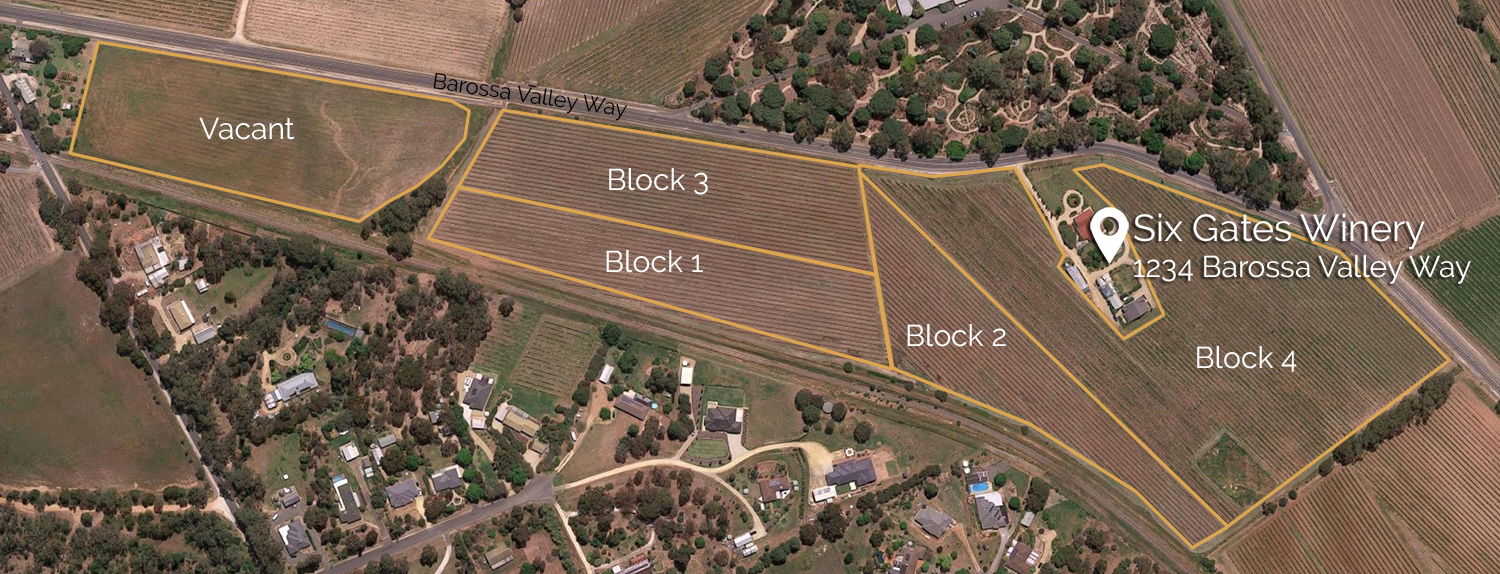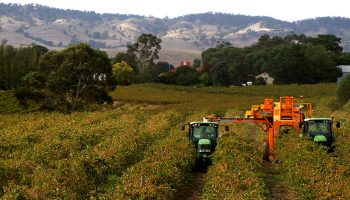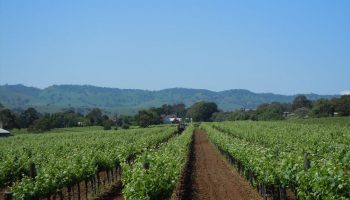The Vineyard
Six Gates estate occupies a scenic stretch of fertile land, along the Barossa Valley way in the wine capital of Australia. All Six Gates wines are produced exclusively from this single vineyard.
| Block # | Variety | Rootstock | Clone | Vine Spacing | Row Spacing | Area | Year Planted | Pruning |
|---|---|---|---|---|---|---|---|---|
| 1 | Cabernet Sauvignon | Own Rooted | G9V3 | 1.8m | 3.3m | 2.1 | 1998 | Spur |
| 2 | Cabernet Sauvignon | Own Rooted | LC10 | 1.8m | 3.3m | 1.63 | 1999 | Spur |
| 3 | Shiraz | Own Rooted | Drycot | 1.8m | 3.1m | 2.1 | 1998 | Spur |
| 4 | Shiraz | Own Rooted | 1654 | 1.8m | 3.1m | 5.27 | 1999 | Cane |
Fertile Soil
The soil is essentially uniform across the blocks. It consists of 20-30 cm loam, over 50-60 cm red clay providing the essential water holding capacity. Beneath the clay is well-decayed lime stone acting as a perforating layer that prevents water logging.
Aspect
The rows run on a gentle north-facing slope maximising light capture for producing intense grapes.
Irrigation
The vineyard is irrigated by dedicated water supplied by Barossa Infrastructure Ltd. Irrigation is scheduled to achieve rich fruit of small berry size and deep colour. An automatically controlled system deliver filtered water at uniform rate and is used for in-line fertilizer delivery.
Given the changes in global weather, water availability has proven crucial to producing premium grapes. ORDER ENQUIRY




